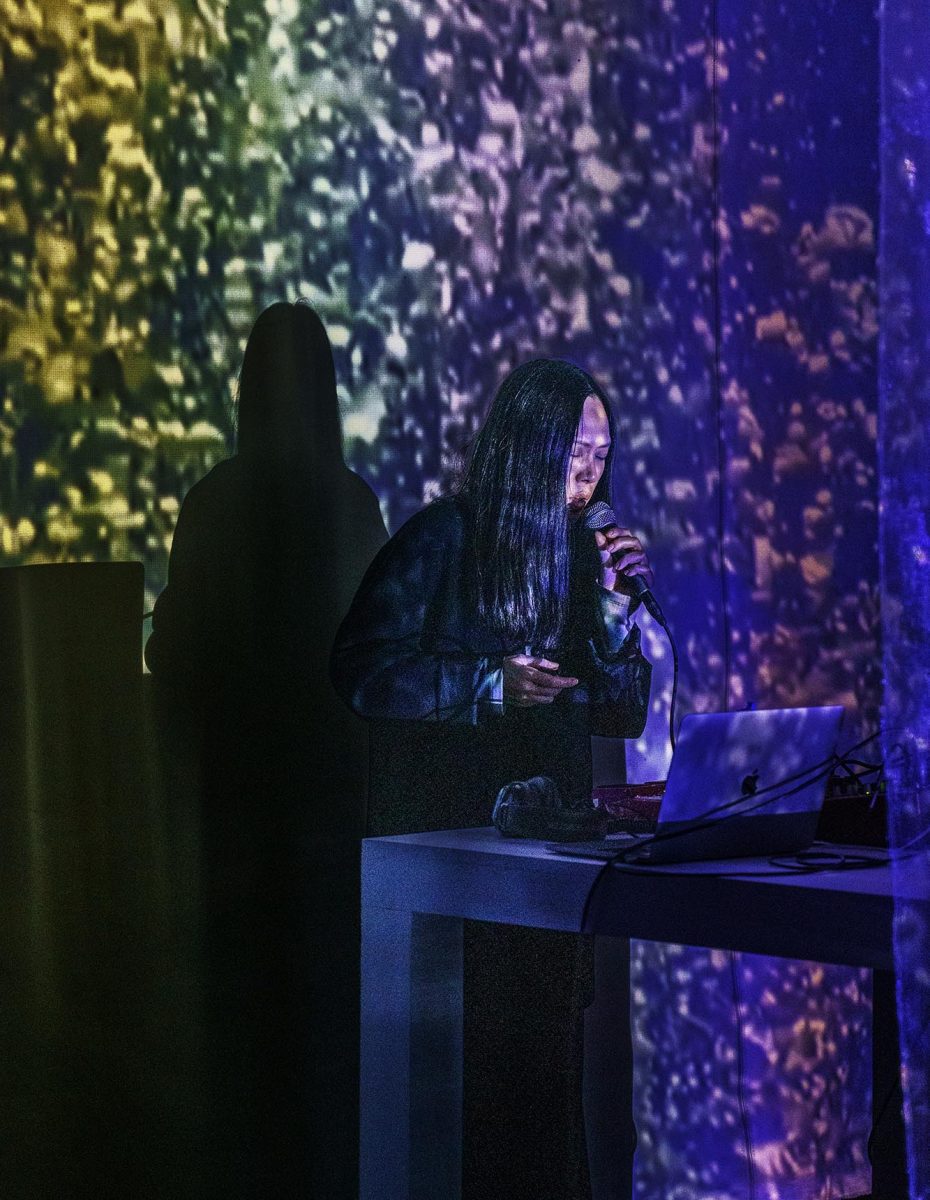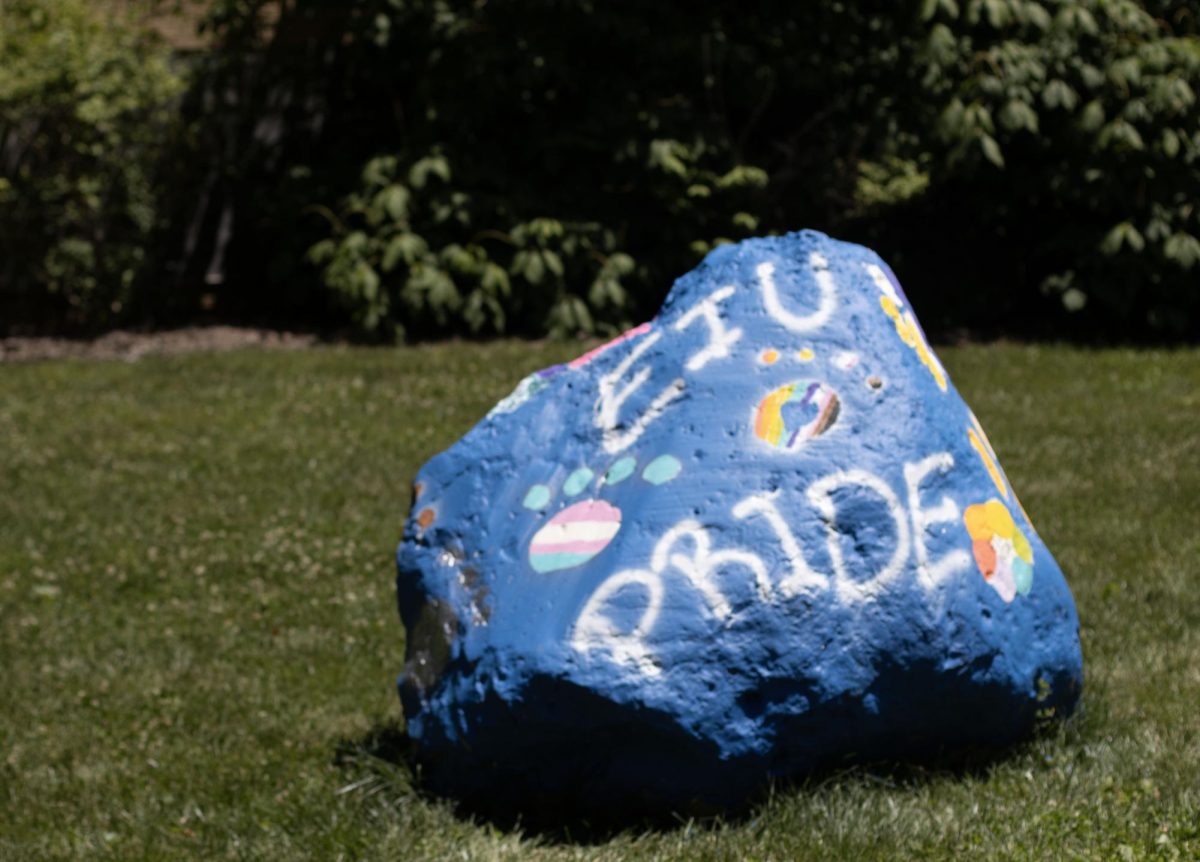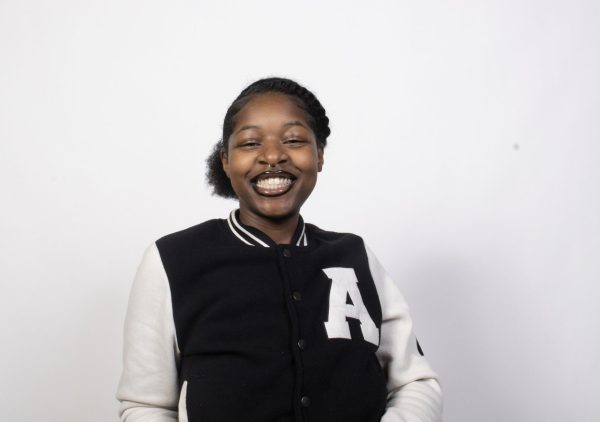In collaboration with its “Who Speaks for The Ocean?” exhibit, the Tarble Art Center showcased “Do Whales Dream of Electric Human” on Thursday from 7 p.m. to 8 p.m.
“Do Whales Dream of Electric Human” is a live sonic performance commissioned for “Who Speaks for the Oceans?” exhibit. Japanese musician and artist Miho Hatori was inspired to create this work by the experiences she had offshore freediving and the works of Philip K. Dick and Roger Payne.
“For me, this is like my, I would say like questions to the world and also the questions to the whales as well,” Hatori said. “I mean they are incredible creatures, and they must know something so I kind of wanted [to] have a conversation with the whales in a way.”
Hatori hoped the views can leave the experience with a different understanding or new perspective on whales, their level of intelligence and communication.
“I think it would be super nice [for viewers] to have like some sort of new perspective,” she said. “I think that would be nice because it is actually not that many people have that [freediving] experience to be in especially offshore ocean.”
The performance used sound and visuals to fully immerse its viewers into believing they are swimming alongside whales.
Standing behind a translucent glass wall, Hatori began to fade into the video projections of clips from her free dive and a video cast on the floor of whales swimming.
The hues of blue and white coming from the videos were the only source of light.
The illuminating room made the feeling of being underwater more realistic.
The vocalization of the whale mixed with the sound of the water and Hatori’s improvised singing and harmonization acted as a conversation between Hatori, the whales and the audience.
Hatori’s goal was to get people to understand that whales are more powerful creatures than people can give them credit for and there is a connection between them and humans that people do not know yet.
“I hope we can have a better relationship with these amazing creatures and understanding about the ocean,” she said. “We don’t know anything yet. I think the ocean is connecting to our subconscious so those are the things we are not understanding yet of ourselves as well.”
Director and Chief Curator of Tarble, Jenifer Seas was ecstatic about Hatori’s performance in the exhibits because her passion and inspiration for the works of Alaina Claire Feldman and David Gruber is what brought “Who Speaks for the Oceans?” to Tarble the first place.
Not only that, but she is a long-time Miho Hatori fan.
“She is an artist featured in the exhibition with a video installation, and this performance activates that installation in a more complex way with additional visuals and the addition of sound,” she said.
“While the performance is still quite abstract, the sound will introduce more of Hatori’s influences, which include her experiences offshore diving with whale sharks, pilot whales and sperm whales; novelist Philip K. Dick’s dystopian visions of human relationships to cyborgs and their own humanity…,” said Seas.
Alaina Claire Feldman and David Gruber curated the first installation of “Who Speaks for the Oceans?” which was displayed in the Mishkin Gallery at Baruch College in New York City.
The exhibit description on Eastern’s website read, “This exhibition proposes new and challenging ways to shift our understandings of and relationships to whales and other nonhuman animals. Through interdisciplinary artworks in video, installation, painting, tapestry, music, performance, and more, Who Speaks for the Oceans? analyzes epistemological and historical knowledge built around what we think we know about life in the ocean through the charismatic “whale song…”
Seas became inspired by the work of Feldman and Gruber and had to have them come to Charleston to display thesis ideas to a wider audience.
“I asked Alaina and David if they would work with me to travel the exhibition to the Tarble, expand it to include more artists and perspectives, and help me develop programming to deepen audience engagement with the ideas explored in the exhibition: namely, how we understand, communicate, and care for non-human species with whom we share the Earth…” Seas said.
She also wanted viewers to understand the impact caused by Roger Payne’s “Songs of the Humpback”.
Songs of the Humpback Whale is a collection of whale sounds Payne considered songs that opened the conversation regarding violence against whales.
According to the description of the album in the exhibit, “It helped instigate the Save the Whales campaign, was sampled by popular and experimental contemporary musicians, was added to the playlist of NASA’s Voyager Golden Record and was even played on the floor of Congress by animal activist Christine Stevens during a hearing on whale conservation. Due in part to such efforts, commercial whaling was officially banned in the United States by 1982.”
There are several other visual and interactive displays that further push the exhibit’s message.
Who Speaks for the Oceans is open to the public during gallery hours, until Jan. 27, 2024.
Alexis Moore-Jones can be reached at 581-2812 or at [email protected].














































